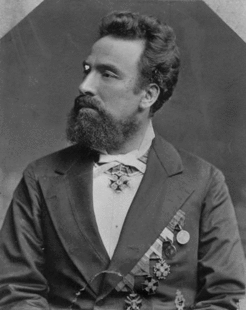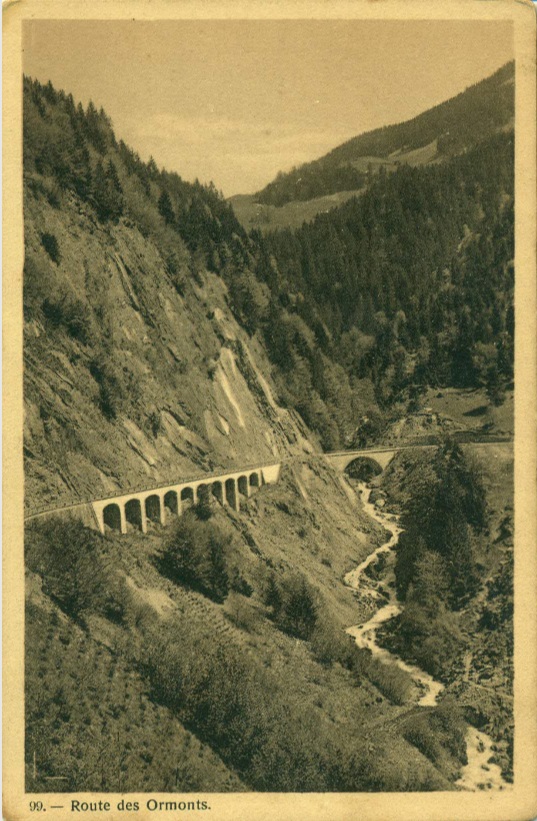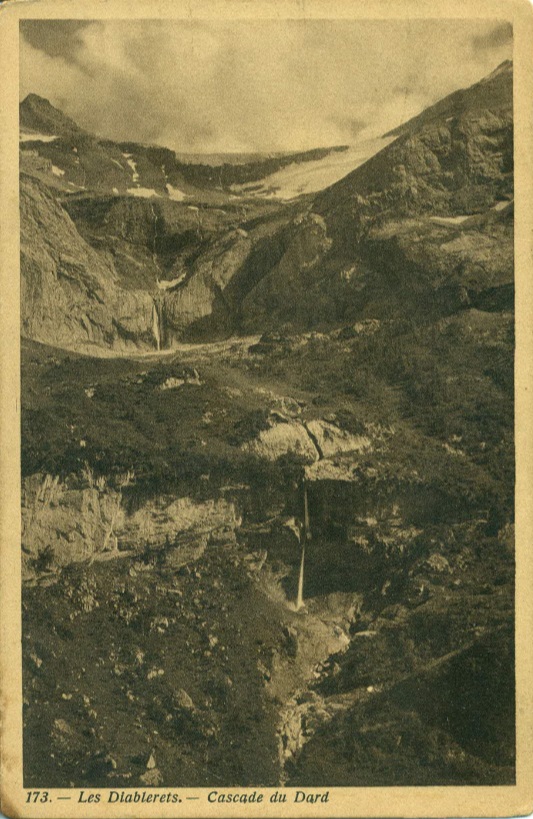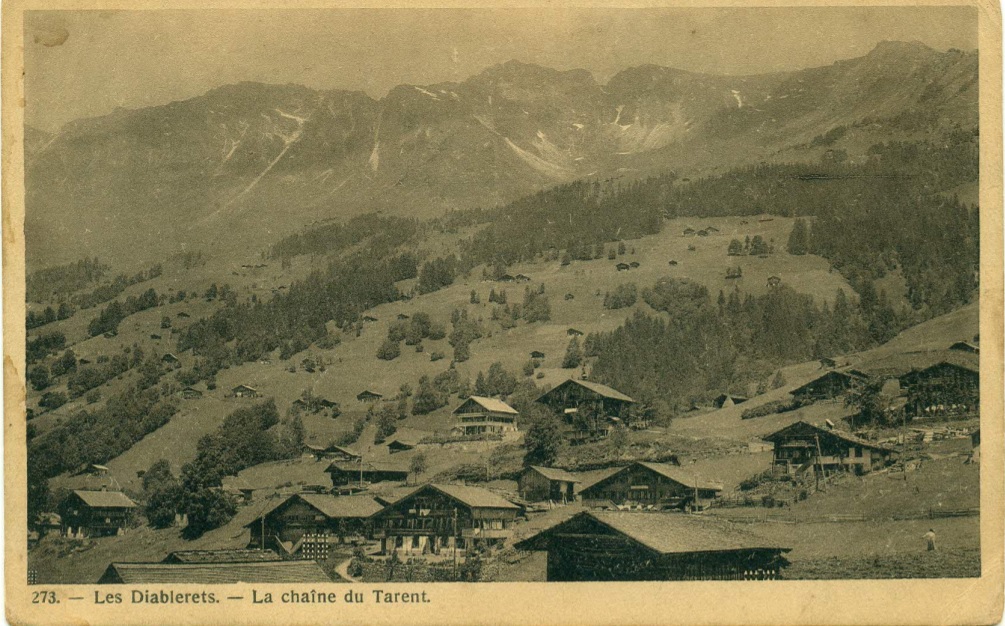|
|
|||||||||
|
Read about Auguste's remarkable story in Henri Tardent's account. Now read on! After Alexander II's Turkish War, where Auguste Tardent was Deputy Chief of the Russian Red Cross, on the reommendation of the Central Committee, he was created Commander of the Order of St Stanislaus. After an illustrious career, at the end of the Russian Turkish conflicts, and after a bad dose of typhus struggling between life and death, surviving incredible hardships, doing deeds of valour, overcoming the political machinations of Russian courtiers, jealous of his success with the Tsar and Tsarina, Auguste turned his hand to teaching. The following account is a chronology of events of Auguste Tardent, the progenitor of the Tardents in the United States of America commencing when Henri Tardent's account of March 1887 leaves off in Akkermann. Auguste went to the Caucasus where he stayed for some time with his architect friend Knore at Stavropol, a Russian city founded initially as a strategic outpost during a Russo-Turkish war in the 18th century. From there he went to nearby ancient city Tiflis or Tbilisi, today the capital of Georgia, where he was well received by the Director of Schools. Auguste accepted a post of teacher at the Erivan Classical Grammar School. There is a photo of Auguste taken in front of this school, now hanging in the Erivan Museum of History. From family anecdotal evidence, he was director of the school, a French boarding school for girls, and that his wife, Vera, was with him. Auguste Tardent's daughter, Inna, attended the University of Lausanne early in the twentieth century, and returned to Switzerland from the Russian Empire on her honeymoon in 1912. During one of those visits, she may have acquired these postcards, pictured below, from the Ormonts Valley; they were taken by a photographer active in Leysin at the beginning of the 20th century. The following is a brief chronology of events that led to the establishment of Tardents in the USA. |
 |
 |
The photo above is Auguste with General Ivan Balachev, Active State Councillor of the Russian Red Cross where they accepted the Russian surrender, in the Russo Japanese war at Port Arthur 1905. According to family accounts, Auguste managed much of the immediate post-surrender arrangements. Photos to the left are by G. Decaux, Phot-Edit., Leysin, taken between 1900 and 1910, acquired as postcards when the family were taking eldest daughter Inna to continue her studies at the University of Lausanne Switzerland. 1889: Auguste’s eldest daughter, Inna Avgustovna, was born. She died in the Stevens' house in St Louis Missouri in 1955. She was the only one of Auguste’s children to survive the Russian Civil War and Stalinism; she succeeded in emigrating to the United States in 1929, via Constantinople and Paris. 1891: Auguste’s middle child and only son Sasha, born in 1891, reputedly joined the “Greens” in his late 20s: The Greens were armed peasant groups fighting against all state-sponsored armies till 1922; the family believes that he did not survive collectivization and the beginnings of Stalinism but no official date of death is available as far as is known. 1898: Auguste’s youngest child, Lydia, was born. She was eventually married to an Imperial General older than her (“to protect her,” something her elder sister, Inna, regretted until her death); Lydia died in childbirth in 1919, aged 21. 1900: Auguste, in writing to Henri, comments about the financial difficulties he is having with his private school in Erivan and its transfer to the city school director’s jurisdiction. 1902: portrait of August from Vladivostok: perhaps he returned to the Red Cross “Asiatic section"(if such a thing existed) and went east to survey the situation? 1903, Feb: Auguste speaks about Manchuria, as though he were there (letter p. 460-1 of orange genealogy). He speaks about selling his family’s home in Erivan and moving as a family elsewhere in the Caucasus or “here.” 1903, mid-year: His wife, Vera, (and presumably children) did in fact join him in the Far East—in proof of which the family has a variety of Chinese ‘souvenirs,’ as well as Henri’s letters. Auguste’s letter to his brother, Henri, talks not only about his family’s abilities in foreign languages (he sounds a bit of a martinet about his wife learning English!) but also mentions “the Chinese situation,” and (letter from later in 1903) about Russian forces in Manchuria. |
 |
1905, Sept: The photo of Auguste, above is inscribed "A ma chère et brave mere, Mme veuve Tardent, souvenir de son fils Auguste á son retour du siege de Port Arthur en Chine en Sept. 1905". (The siege ended Jan 1905). General Anatoly Stessel was court-marshalled for having surrendered the city un-necessarily (documented); Stessel also left Port Arthur almost immediately on the signing of the peace, on a British steamer. Date unknown: Family stories suggest that Inna Avgustovna was presented at the Russian Imperial court, and given the family circumstances, surely before her father’s death, and indeed possibly as early as 1905, when she would have been 16 years old. Unsigned portrait in Stevens family’s possession, as is an ostrich feather fan, which in theory she reputedly carried for the occasion. Surely before Jan 1909, when her father (Auguste) died. 1907: Letters from Auguste from Piatigorsk (April-May). These are apparently largely about pension plans, but they do establish Auguste’s location. No idea what he was doing there! 1908: There is a photo portrait of the family in Lausanne (were they taking eldest daughter Inna to school?). She lived, according to Inna’s daughter, Irene B. Stevens, with a wealthy banker’s family while attending Université de Lausanne. A certificate of completion of studies in French literature and culture at Université de Lausanne is in the archives of the Canton de Vaud.. Date unknown: Portrait of Balachoff inscribed “to Mme Tardent in memory of the affection I bear to her son following his services to the Red Cross during the wars of 1877-1881.” Family understanding, undated: Auguste became a Russian Imperial State Councillor (Shtatskii Sovetnik)—no date. This was grade 5 in the table of ranks; anyone who achieved grade 4 became a hereditary noble; grade 1 was the top possible. This is not impossible to check, but due to the difficulties in doing so neither the award not its date have been confirmed to date. There is a photo of him appropriately ‘decorated’ in the Stevens family’s possession. 1909, Jan 31: Auguste dies in Piatigorsk of typhus age 60. 1912: marriage of Auguste’s eldest daughter, Inna; her honeymoon trip was to Switzerland, and esp. to the Chateau Chillon. So, Irene Stevens’ family visited as soon as possible from the US! Inna and her husband (Nikolai Pavlovich Belkin-Bedraga, who worked briefly as a land judge in Poland, died in the US in 1965) lived on their estate in Izium, near Kharkov, in present day Ukraine. 1918-1920: Nikolai (a constitutional monarchist or perhaps a Russian-style democrat) joins Denikin’s White Forces in Ukraine. He was evacuated to Constantinople by the British (without, according to family legend, understanding that his family would not be evacuated with him). His wife, Inna Avgustovna (Auguste’s daughter) walked around the Black Sea to Constantinople with her two young sons (John b. and Paul b. ) 1919-1920: Vera Bashinskaia, Auguste’s spouse, appears to have died in Arkhangelsk in these years at the end of the Russian Civil War. The location and the dates suggest that she was trying to leave Russia, perhaps with Allied help (France, UK, US had troops nearby during those dates). |
 |
1923(?)-1929: Inna—Auguste’s daughter—lived on the outskirts of Paris with husband Nikolai and kids. The boys (John and Paul) went to a French Catholic boarding school in Gravelines; their younger sister, Irene, was born in Paris in 1924. Inna put the skills she had acquired as a “well brought up” young woman in Russia to use, embroidering garments for the French fashion houses (there is a camisole in evidence! And residence papers for the family for France!) 1927: There is a photo of Valeria Belkina (Inna’s sister-in-law?) as a MedSistra (nurse) “in memory” to her brother, Nilkolai, Inna’s spouse. It is unclear when the photo was taken, but the inscription is dated Paris, May 1927. 1929: arrival in the US. Not good timing to arrive during the Great Depression, but that’s another story! |